目录
第一题
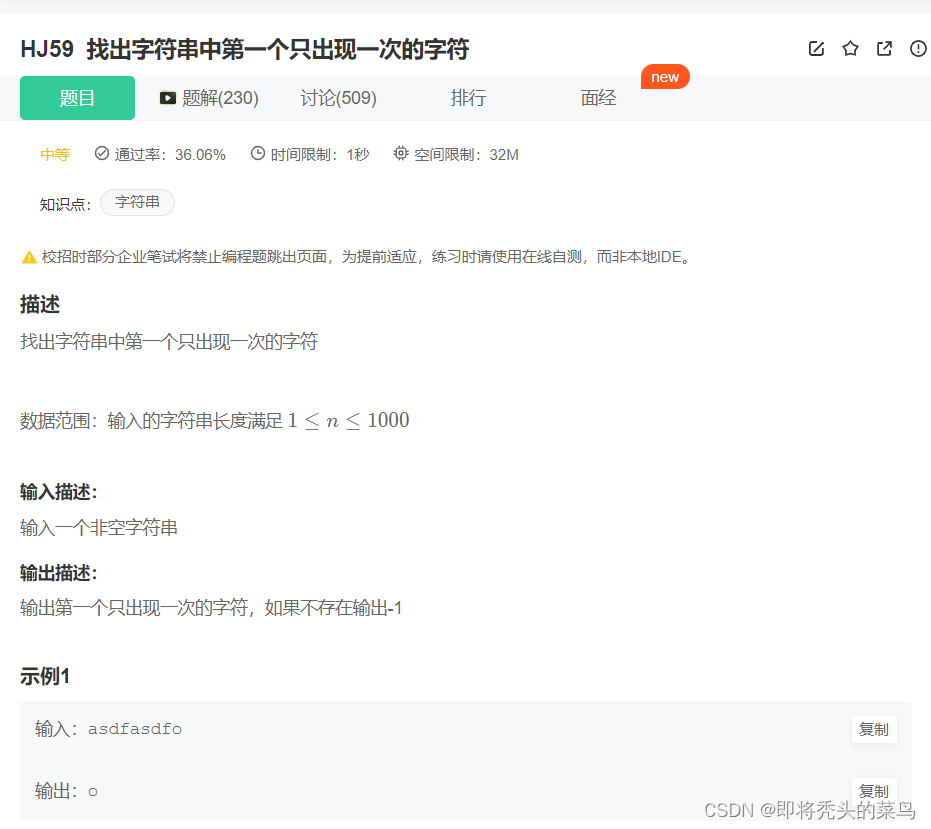
读完这个题第一时间我就想到了 HashMap, 我们把字符串变成字符数组, 把每一个字符放进 map 里面, 然后在遍历字符数组, 先碰到了value 值为 1 的字符马上返回, 没有就返回 1 就好了.
下面看代码:
import java.util.Scanner;
import java.util.HashMap;
import java.util.Map;
public class Main {
public static void main(String[] args) {
Scanner scanner = new Scanner(System.in);
while (scanner.hasNext()) {
String str = scanner.nextLine();
int result = firstUniqChar(str);
if (result == -1) {
System.out.println(result);
} else {
System.out.println((char)result);
}
}
}
private static int firstUniqChar(String str) {
Map<Character, Integer> map = new HashMap<>();
for (char ch : str.toCharArray()) {
map.put(ch, map.getOrDefault(ch, 0) + 1);
}
for (char ch : str.toCharArray()) {
if (map.get(ch) == 1) {
return ch;
}
}
return -1;
}
}可以看到也是通过了这个题
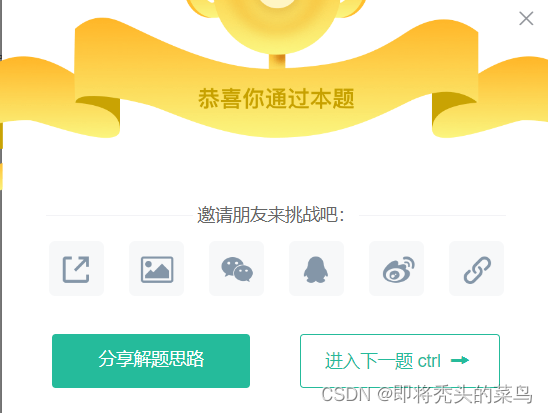
第二题

看到从尾到头反过来打印, 想到一种数据结构--栈, 栈的特点就是先进后出, 所以我们可以把链表的值, 从头节点开始, 全部压栈, 然后再全部弹出存放到数组中, 再输出就好了.
public int[] reversePrint(ListNode head) {
Stack<Integer> stack = new Stack<>();
ListNode cur = head;
while (cur != null) {
stack.push(cur.val);
cur = cur.next;
}
int[] arr = new int[stack.size()];
for (int i = 0; i < arr.length; i++) {
arr[i] = stack.pop();
}
return arr;
}
第三题
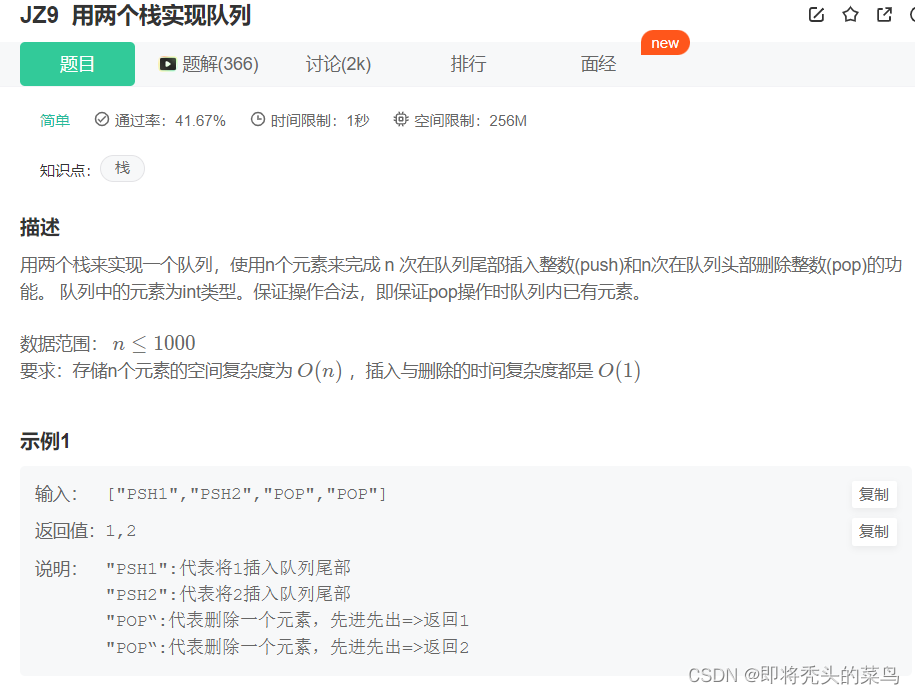
将一个栈当作输入栈,用于压栈传数据, 另一个栈用于出栈, 弹出数据
每次出栈, 如果输出栈为空, 则将输入栈的全部数据依次弹出并压入输出栈, 这样输出栈从栈顶往栈底的顺序就是队列从队首往队尾的顺序.
就很简单的push操作就正常push到第一个栈末尾, pop操作时,优先将第一个栈的元素弹出,并依次进入第二个栈中, 就好了.
public class Solution {
Stack<Integer> stack1 = new Stack<Integer>();
Stack<Integer> stack2 = new Stack<Integer>();
public void push(int node) {
stack1.push(node);
}
public int pop() {
while (!stack1.isEmpty()) {
stack2.push(stack1.pop());
}
int res = stack2.pop();
while (!stack2.isEmpty()) {
stack1.push(stack2.pop());
}
return res;
}
}
第四题
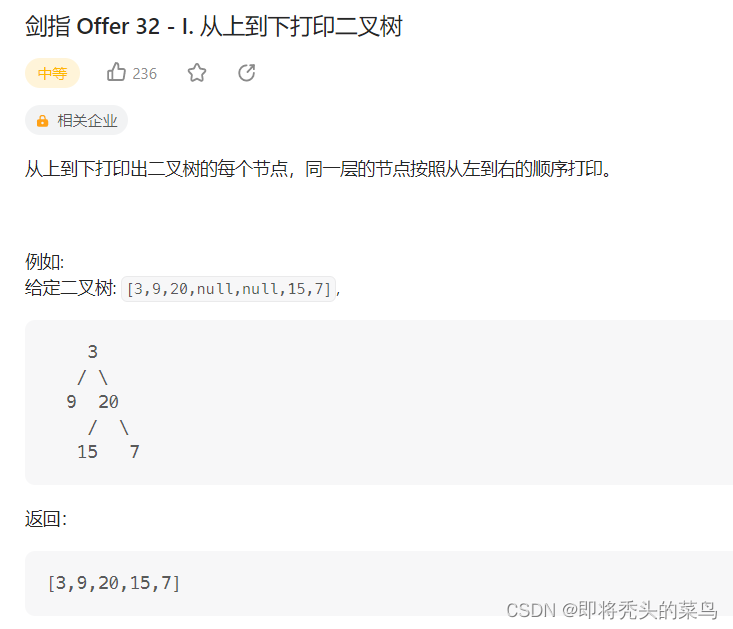
从上向下打印, 也就是层序遍历打印, 这里又被称为 二叉树的广度优先搜索(BFS) , BFS 通常是借助 队列 先入先出的特点来实现的.
- 判断root根节点是否是null,如果是直接返回.
- 创建队列queue,将root节点放入.
- 队列中非空时,将队头弹出,此时还要创建一个arrayDeque集合来存取queue弹出的数,如果弹出的数有左节点或者有右节点,将其放入队列中.
- 当队列为空时,结束循环,将集合中的元素放入数组中,返回数组.
public int[] levelOrder(TreeNode root) {
List<Integer> list = new ArrayList<>();
Deque<TreeNode> deque = new ArrayDeque<>();
if (root != null) {
deque.addLast(root);
}
while (!deque.isEmpty()) {
TreeNode t = deque.pollFirst();
list.add(t.val);
if (t.left != null) {
deque.addLast(t.left);
}
if (t.right != null) {
deque.addLast(t.right);
}
}
int n = list.size();
int[] ans = new int[n];
for (int i = 0; i < n; i++) {
ans[i] = list.get(i);
}
return ans;
}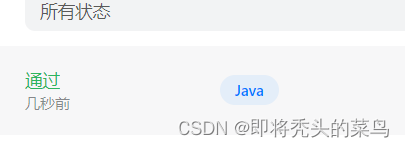
第五题
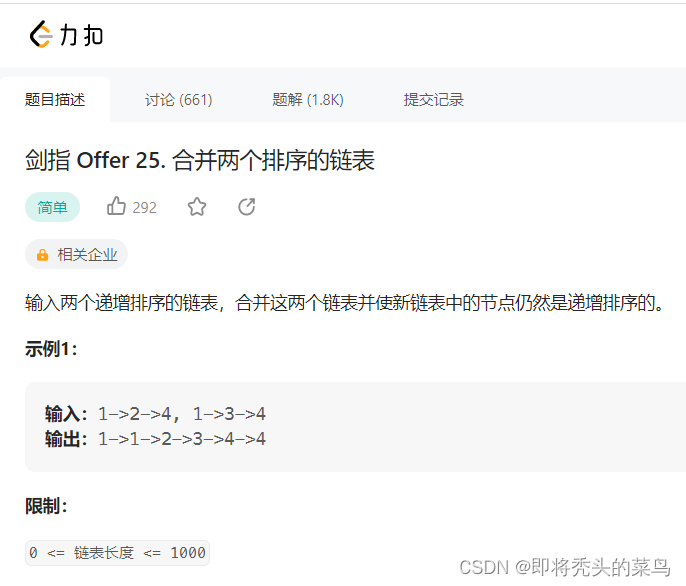
采用递归的思想解题, 每次都用两个链表头部值较小的一个节点与剩下元素的 mergeTwoLists 操作结果合并。
public ListNode mergeTwoLists(ListNode l1, ListNode l2) {
if (l1 == null) {
return l2;
}
if (l2 == null) {
return l1;
}
if (l1.val > l2.val) {
l2.next = mergeTwoLists(l1, l2.next);
return l2;
} else {
l1.next = mergeTwoLists(l1.next, l2);
return l1;
}
}























 1463
1463











 被折叠的 条评论
为什么被折叠?
被折叠的 条评论
为什么被折叠?










